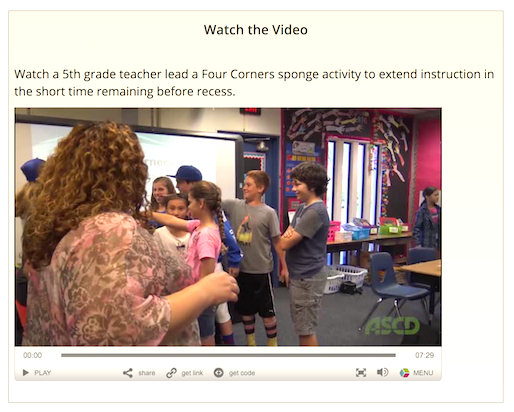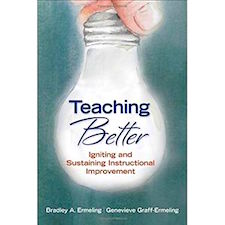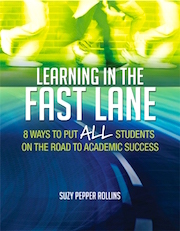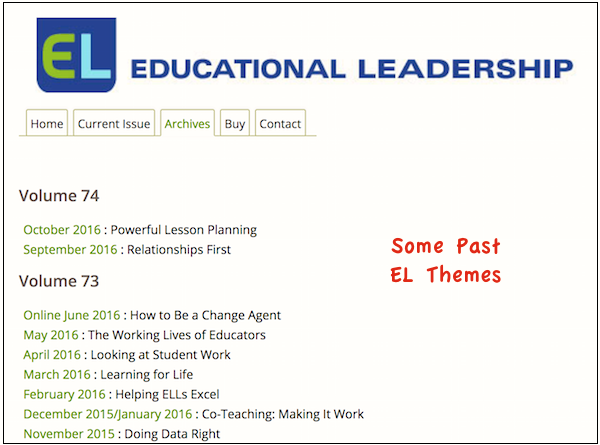 By Cathy Gassenheimer
By Cathy Gassenheimer
Remember the scene from the movie, The Jerk, when Steve Martin gets so excited about the arrival of new phone books? I always get that same sense of anticipation when the newest issue of Educational Leadership lands on my desk. I guess you can call me The Nerd!
Unlike Steve’s character, I’m not excited because I’ll see my name in print, but rather because I get to read the ideas of prominent education thought leaders – and other insightful writers I’m about to “meet” for the first time.
EL’s October issue didn’t disappoint. In fact, I found so many useful learnings wrapped inside the cover of this issue, that I decided to blog about it!
Among the goodies . . .
 Those of you who are ASCD members know that each issue of Educational Leadership has a theme. The October 2016 issue is themed Powerful Lesson Planning, and features articles written by Susan Brookhart, Marilyn Burns, and many others. The issue also contains a monthly treat: columns by Carol Ann Tomlinson and Doug Fisher & Nancy Frey.
Those of you who are ASCD members know that each issue of Educational Leadership has a theme. The October 2016 issue is themed Powerful Lesson Planning, and features articles written by Susan Brookhart, Marilyn Burns, and many others. The issue also contains a monthly treat: columns by Carol Ann Tomlinson and Doug Fisher & Nancy Frey.
In my summaries, I’ve linked the titles of articles available to non-members.
► Starting, as I always do, with Carol Ann Tomlinson’s column, I learned more about her views on standards-based instruction. In “Lesson Plans Well Served,” Tomlinson uses a dinner analogy to suggest that lesson plans that are “well served” go beyond simply including the standards. “To generate compelling curriculum, teachers have to embed the standards in learning contexts that enliven the curiosity and thinking of students and that represent with validity the nature and intent of the disciplines they teach.”
► Fisher and Frey’s column “Sponge Activities: Make Every Minute Count” urges teachers to intentionally plan “sponge activities” to address the different paces at which students learn. “Sponge activities can be planned as part of powerful lessons. They shouldn’t be left to chance. It’s simply too hard to invent relevant and valuable experiences for students on the spur of the moment when teachers discover there are a few minutes remaining.” You can watch their video here showing a teacher modeling a sponge activity.

► Susan Brookhart, in her article “Start With Higher-Order Thinking,” suggests three lesson planning strategies that will help students think more deeply:
- Use Open Questions like “How are 11 and 16 alike?” Or, ask students to describe a fictional student to critique a specific idea or analyze a problem that was solved incorrectly. Other open question strategies include encouraging student-to-student discourse or promoting student think-alouds.
- Thinking, Not Retelling, Strategies require students to do more than regurgitate what they’ve heard from the teacher or read from a book. Strategies range from asking students to retell a story or concept, respond to “what if” and “what else” questions, or respond to a purposeful problem related to the task at hand.
- Student Self-Assessment is critical to helping students become life-long learners. And, it is a key aspect of student-engaged assessment, a teaching and learning process advocated by Ron Berger and Expeditionary Learning. Brookhart suggests using rubrics and confidence ratings (asking students how confident they are understanding specific topic or concept by using hand signals to share with the teacher where they currently stand). She also suggests that teachers invite students to co-create success criteria for a specific assignment.
 ► Another article, titled “Every Lesson Needs a Storyline,” is written by two educators who’ve spent extended periods of time in Japan and become experts in lesson study. Brad Ermeling & Genevieve Graff-Ermeling(authors of Teaching Better) suggest that students learn better when they are exposed to a thorough storyline, “the overall sequence or progression of lesson elements that helps students advance toward specific learning goals.”
► Another article, titled “Every Lesson Needs a Storyline,” is written by two educators who’ve spent extended periods of time in Japan and become experts in lesson study. Brad Ermeling & Genevieve Graff-Ermeling(authors of Teaching Better) suggest that students learn better when they are exposed to a thorough storyline, “the overall sequence or progression of lesson elements that helps students advance toward specific learning goals.”
► Respected math educator Marilyn Burns writes about choice in her article “Using Math Menus: Giving Students a Menu of Activities to Choose From Helps Differentiate Instructional and Engage All Learners.” Burns defines a math menu as “a list of math options posted on a sheet of chart paper for all to see.” The options can include problems, investigations, games, and other activities that promote students’ understanding, support their reasoning, or provide practice with the content and skills they’ve been learning.”
► In “Pursuing the Depths of Knowledge,” Nancy Boyles explores the four depth-of-knowledge levels and provides examples of ways that teachers can use all four throughout a unit. She suggests that teachers use a “new lens” to look at rigor and instruction. “If we view rigor applying only to higher-level thinking, we’re overlooking foundational textual knowledge that students need to fully grasp the deeper complexities of a text. As we reflect on our instruction, we should make sure we’re not only including all four levels of depth of knowledge—recall and reproduction, skills and concepts, strategic thinking, and extended thinking—but also holding ourselves and our students accountable for rigor at every level.”
 ► Suzy Pepper Rollins tackles scaffolding in her article, “Just-in-Time Support.”Rollins points out that there are “as many examples of scaffolding as there are needs of students,” and suggests some “staples to consider,” including annotated bookmarks, cheat sheets on a sticky note (e.g. quick access facts such as latitude and longitude, rules of grammar, etc.), chunking, and mnemonic devices to name a few.
► Suzy Pepper Rollins tackles scaffolding in her article, “Just-in-Time Support.”Rollins points out that there are “as many examples of scaffolding as there are needs of students,” and suggests some “staples to consider,” including annotated bookmarks, cheat sheets on a sticky note (e.g. quick access facts such as latitude and longitude, rules of grammar, etc.), chunking, and mnemonic devices to name a few.
► And, finally, in “The Promise of Collaboration,” by Michelle Baumi, the focus is on teacher learning and lesson planning. “Effective collaboration,” she writes, “is generally characterized by shared goals, good communication, and equitable contributions by all participants. But it’s important to note that planning with others doesn’t automatically yield effective lessons. Collaboration isn’t a proxy for thoughtful, intelligent planning. To reap the benefits, teachers must follow the principals of effective lesson design, such as using assessment data to inform lesson plans.”
Educational Leadership is worth everyone’s attention
I hope I’ve enticed you to pick up your copy of Educational Leadership and peruse these articles and others not mentioned here but that are included in the October issue. And, if you’re not an ASCD member, you might want to join ($49) and receive EL each month in your postal mail. A digital-only membership is $35 annually and provides online access to EL and related newsletters. You can even buy single copies of EL for $8.95 (plus $6.50 shipping).

Who knows, maybe next month you’ll be as excited as I am when your copy of Educational Leadership arrives. If so, I can hardly wait to hear what articles resonated with you!
Cathy Gassenheimer is Executive Vice President for the Alabama Best Practices Center, A+ Education Partnership.

0 Comments on "Tap a Rich Vein of Resources about Powerful Lesson Planning"